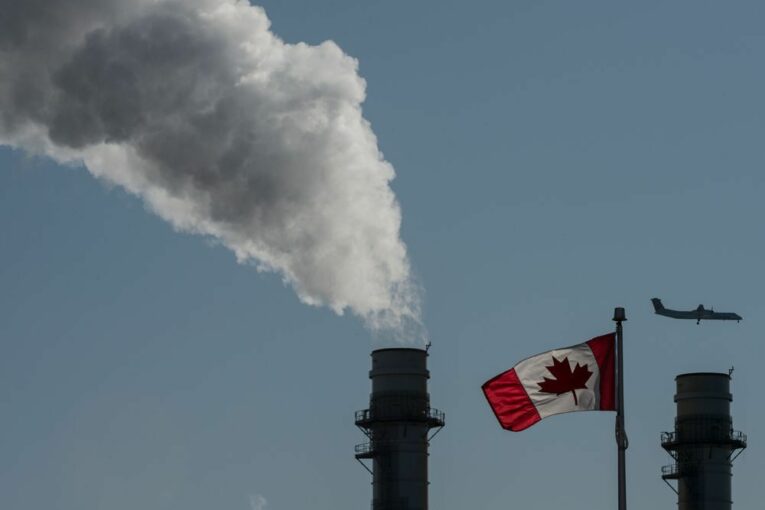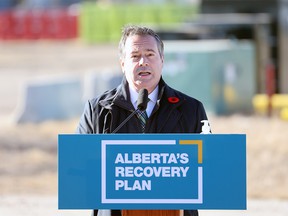
As Prime Minister Justin Trudeau touted his government’s tough new emissions cap on Canada’s oil and gas industry while attending the COP26 climate summit on Monday, another conference was quietly examining how this might actually work.
The gathering by Petroleum Technology Alliance Canada (PTAC) saw oilpatch executives, academics and government officials come together to discuss their expectations, questions and concerns about how to lower oil and gas emissions as the country charges towards a net-zero future — and if it’s even possible.
“No one company can do it alone … it’s a massive problem to solve,” PTAC chair Kevin Stashin, former chief executive of NAL Resources, said at the alliance’s 2021 Net-Zero & Methane Emissions Reduction Conference.
“I’ve seen the industry deal with a lot of issues over the years and they’ve always been able to solve them. This is just another problem and I am confident the oil and gas industry will get to net-zero.”
The issue has seized the attention of the energy sector and Alberta since the Trudeau government said it would adopt the net-zero target and began introducing tough new policies, from an escalating price on carbon to the planned introduction of the Clean Fuel Standard in 2022.
Five of the largest oilsands producers are collaborating to get to the net-zero mark , while seeking federal assistance for major capital investments into areas such as carbon capture, utilization and storage (CCUS) projects.
On the federal campaign trail this summer, the Liberals also pledged to put in a cap on emissions from the oil and gas industry. The prime minister touted the plan while in Glasgow at the COP26 conference , triggering a sharp response from the Alberta government .
“If, in fact, what this announcement is about today is … ‘Leave it in the ground,’ then, of course, we would fight that with every tool at our disposal,” Premier Jason Kenney told reporters.

Public opinion surveys show a growing view that Canada needs to take action to tackle climate concerns, although that harmony could be fragile.
“Canada is at a hinge point on energy and climate. There is much greater consensus on the need to address climate change,” political scientist Monica Gattinger, chair of the University of Ottawa’s Positive Energy research program, told the PTAC conference.
“The question then becomes can Canada bend its emissions curve downward once and for all … It’s a hugely open question to my mind.”
Polling for the research group this summer found almost two-thirds of Canadians believe that now is the best time for the country to be ambitious in addressing climate change, compared with 45 per cent in June 2020.
The survey also found 68 per cent of Canadians believe oil and gas is important to the economy today.
What is “sobering is that there is little confidence among Canadians that Canada can actually reduce emissions,” Gattinger added.
This challenge is a daunting one for Canada, one of the world’s largest oil and gas producing nations. Any solutions will require a dedicated focus on technological advancement and innovation.
One of the central concerns is ensuring Canadians have access to affordable and reliable energy — an issue that is already surfacing in Europe with soaring gas prices.
Saskatchewan Research Council CEO Mike Crabtree noted the energy transition towards net-zero is not a market-driven shift.
Instead, global policy is driving the change.
“It’s very difficult to get somebody to support net-zero if they are shivering in their apartment with gas prices at five times what they were paying only a few months earlier,” he said at the PTAC forum.
Ryan Chong, an engineer and management consultant with junior producer Dienerian Resources, compared the emissions work being done today to someone putting together a 2,000-piece jigsaw puzzle.
Government and regulators will assemble the edge pieces to define the borders, but the rest will be built using only a picture on the front of a box for guidance.
“Do I think we can get there in 2050, realistically? I’m going to say it’s a huge challenge,” Chong told the online conference.
“Can we get there directionally? Yes, but there are a lot of stakeholders that have to come together to really drive that forward.”
While the COP26 and PTAC conferences were taking place, the Alberta government was holding a news conference at the Genesee Generating Station, rolling out $176 million in provincial and federal funding for 16 emissions-reduction projects .
The bulk of the money is coming from Alberta’s heavy emitters fund, known as TIER. Some $50 million is flowing from the federal Low Carbon Economy Leadership Fund, an example of how both governments can collaborate on this issue.
But future co-operation won’t happen easily with the deep level of suspicion on both sides.
By setting five-year targets Trudeau announced his government will move ahead with limiting oilpatch emissions, which it noted have risen by 20 per cent since 2005.
Kenney said Ottawa has not consulted with Alberta on the cap. He pointed out provinces have exclusive jurisdiction under the Constitution over the regulation of natural resources, although the Supreme Court of Canada ruled in March that the federal price of carbon is constitutional.
As a political battle shapes up, the industry will keep a close watch on where the cap talk is going next.
In Canada, oil and natural gas are the country’s largest exports, supporting more than 500,000 jobs, said Tim McMillan, president of the Canadian Association of Petroleum Producers.
“It will be incredibly important for the federal government and the natural gas and oil industry to work collaboratively to ensure we meet our environmental and social outcomes,” McMillan said in a statement.
“To achieve the ambitions of the Paris Agreement, the world will need increased access to lower-emission natural gas and oil.”
And that work by the industry is already underway, even if it’s taking place outside of the spotlight.
Chris Varcoe is a Calgary Herald columnist.
You can read more of the news on source
